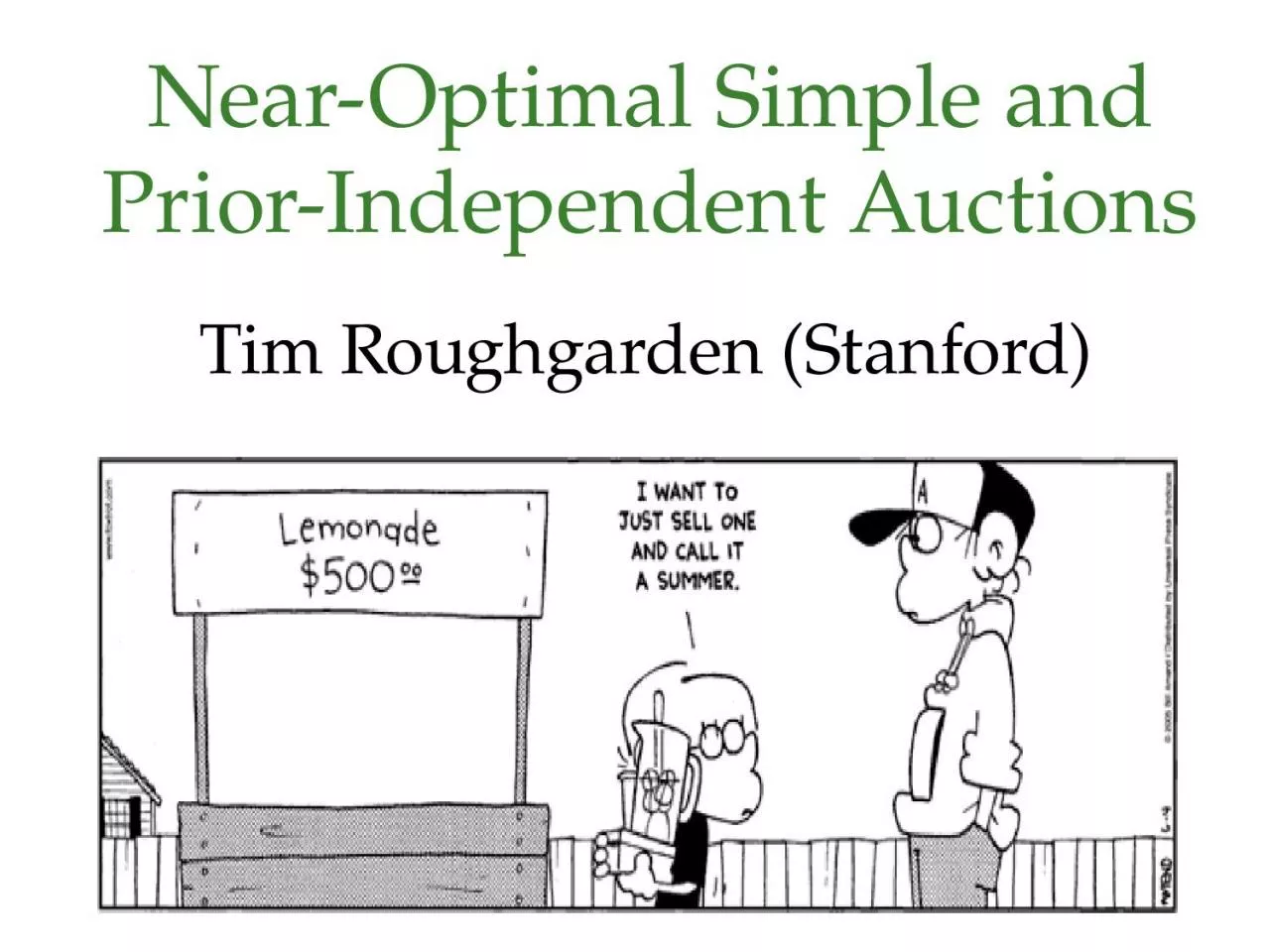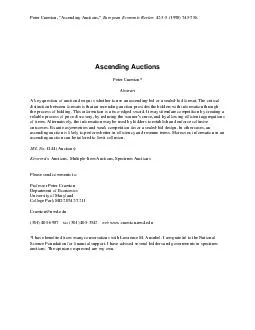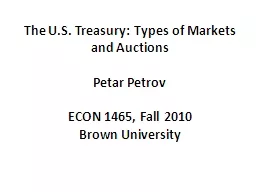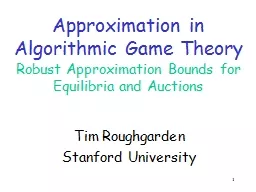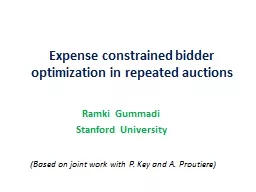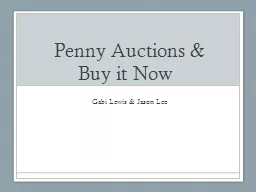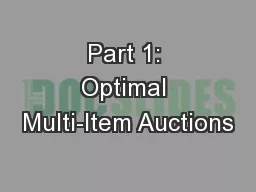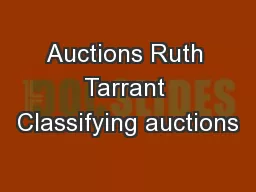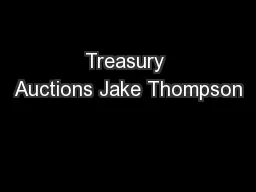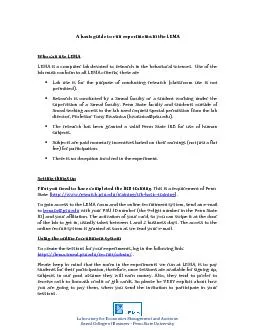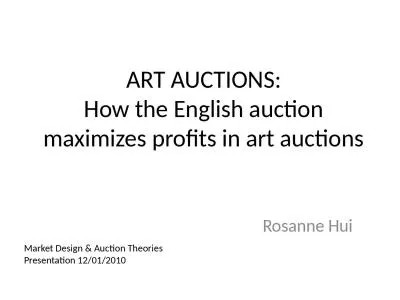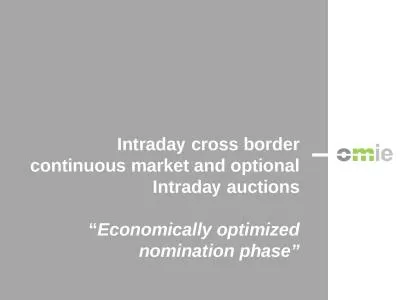PPT-Near - Optimal Simple and Prior-Independent Auctions
Author : hailey | Published Date : 2023-06-23
Tim Roughgarden Stanford 2 Motivation Optimal auction design whats the point One primary reason suggests auction formats likely to perform well in practice Exhibit
Presentation Embed Code
Download Presentation
Download Presentation The PPT/PDF document "Near - Optimal Simple and Prior-Independ..." is the property of its rightful owner. Permission is granted to download and print the materials on this website for personal, non-commercial use only, and to display it on your personal computer provided you do not modify the materials and that you retain all copyright notices contained in the materials. By downloading content from our website, you accept the terms of this agreement.
Near - Optimal Simple and Prior-Independent Auctions: Transcript
Download Rules Of Document
"Near - Optimal Simple and Prior-Independent Auctions"The content belongs to its owner. You may download and print it for personal use, without modification, and keep all copyright notices. By downloading, you agree to these terms.
Related Documents

